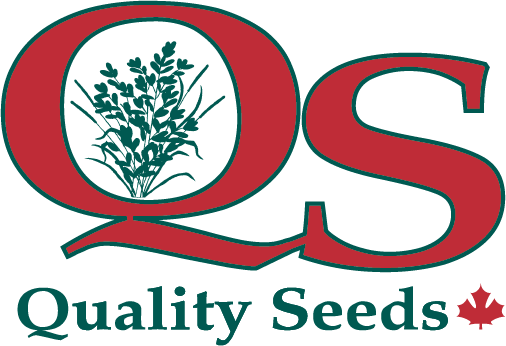Producing More Forage When Inventories Are Tight
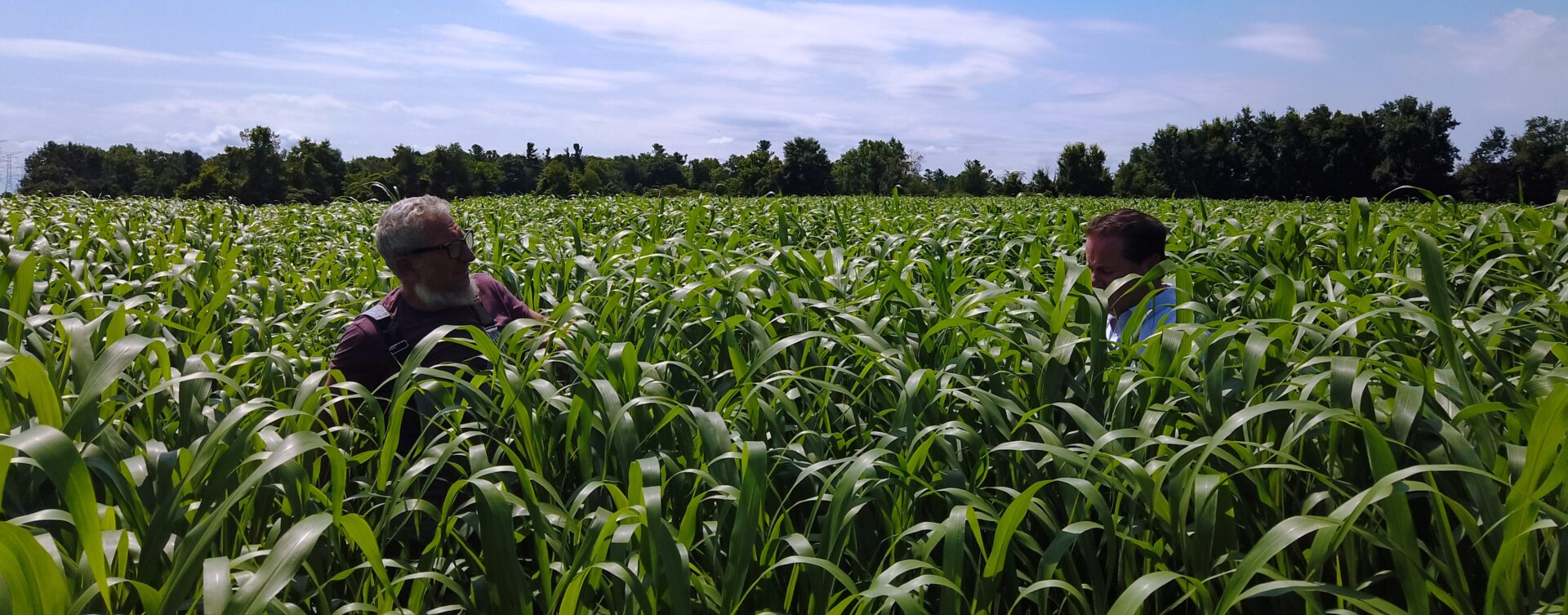
Options Discussed
· Seed New Alfalfa Stands In the Rotation
· Cereals & Cereal-Pea Mixtures
· Early Stand Repair By No-tilling Evolution Italian Ryegrass & Clover
· BMR Sudangrass
· Summer Seeding Alfalfa
· Double-Cropping Annual Forages after Wheat
· Apply Nitrogen To Grass Stands
Although there doesn’t appear to be a lot of winterkill this spring, carryover forage inventories are very tight. Hay is expensive and difficult to find. Forage yields were below average for many farmers last year due to extensive winterkill, an excessively wet spring and then a droughty summer. What are your options to produce more forage?
Seed New Forage Stands In the Rotation
The best practical crop insurance program to ensure adequate forage inventories to feed your livestock may simply be to seed more acres. Forages and cash crops compete for the same acres, and many farmers simply do not have enough forage acres to manage unexpected risks and meet their needs. Winterkill compounds the problem. When yields are less than expected, we find ourselves scrambling to produce emergencies forages.
Growing corn following older, less productive alfalfa fields allows you to utilize the nitrogen credit and the 10 – 15% yield benefit that corn receives following alfalfa in the rotation, paying for the cost of a forage establishment in a new field. A direct seeding can be done, or use a companion crop such as cereals or cereal-pea mixtures. Harvested at the correct stage of maturity, these companion crops can provide some good quality, early forage. Use good agronomic practices to maximize establishment year yields. (“Successful Forage Establishment” https://www.qualityseeds.ca/post/successful-forage-establishment)
Cereals & Cereal-Pea Mixtures
Cereals and cereal-pea mixtures are commonly grown as a forage silage crop, either as a companion crop to a forage underseeding, or on their own. If planted as a companion crop early in the spring with adequate rainfall, these cool-season species grow rapidly to help replace the yield loss of winterkilled first-cut alfalfa.
Nutrient quality is dependent upon stage of maturity at harvest, starting out very high at the flag-leaf and boot-stages, but declining rapidly and significantly by the early-dough stage. Forage quality is totally dependent on stage at cutting. For the highest forage quality, target the flag-leaf stage. A quality issue can occur if a “rain delay” occurs when you need to cut. Of course, yields increase significantly with maturity. With a rainy season, lodging, heavy windrows and inadequate wilting can be issues with underseeded stands that contain peas. This can challenge proper fermentation, and can also damage underseedings if left in a windrow for extended periods of time.
Oats are the preferred forage cereal by many farmers, followed by barley, spring triticale, and spring wheat. They have similar nutrient quality at the same stage of maturity. Although oat rust is a potential concern, forage oats tend to out-yield barley (especially in poorer conditions and later seedings), with less cereal regrowth and heading in the newly seeded second-cut, and without the awns.
Adding peas to a cereal will increase forage quality with higher crude protein (3 – 4% points), digestible energy, and potential feed intake, but often do not significantly increase yield. Pea seed adds to the cost. Triticale is less competitive than the other cereals when mixed with peas, so the resulting pea content can be greater with higher protein and energy.
Early Stand Repair By No-tilling Evolution Italian Ryegrass & Clover
Where alfalfa winterkill is moderate or the areas are in larger patches, some farmers prefer to attempt salvaging the crop for that year by no-tilling a forage into these areas and then terminating the stand in the fall. If winterkill is identified early enough in the spring, the best stand repair option is to no-till Evolution Italian ryegrass and possibly berseem clover, crimson clover, or double-cut red clover . Berseem and crimson clovers are annuals that establish more quickly than red clover. Patching small areas within fields can be difficult, depending on their size and shape, so it is often easier to go over whole fields. The use of a no-till drill to overseed into a thin stand is much more effective than broadcasting or using a conventional drill. Driving a no-till drill across the stand will kill a few existing plants, but with low plant counts the gain should be more than the loss.
Italian ryegrass and clovers are difficult to dry for hay, but can make quality haylage or baleage. Because Italian ryegrass does not form a stem and a seed head the year it is seeded and Westerwold annual ryegrass does, Italian ryegrass provides higher forage quality with extremely high fibre digestibility (NDFD). Ryegrass establishes quickly and grows well when seeded early, but does not do as well during hot, dry summer conditions. Red clover establishes fairly quickly, but its contribution to first-cut is very limited, and a late seeding and hot, dry summer weather will result in limited seasonal yield.
If there was less than 50% alfalfa content in the stand the previous fall, consider applying nitrogen (50 lbs/acre) in the spring at green-up and after each cut to fields overseeded with ryegrass. Fields that had more than 50% alfalfa the previous fall may require supplemental nitrogen at green-up for full ryegrass yield potential.
Suggested seeding rates, depending on the existing stand, are about one-half the normal seeding rates:
· 20 – 25 lbs/acre Evolution Italian ryegrass,
· 5 – 7 lbs/acre berseem clover, crimson clover, or double-cut red clover, if included.
BMR Sudangrass After First-cut
When thin, low yielding winterkilled alfalfa stands are not identified until after a disappointing first-cut, terminating the stand and seeding sudangrass or sorghum-sudangrass can be a useful emergency option. They can also be planted into unseeded soybean and corn acres during a wet year to provide additional forage. These warm-season annual grasses do best in hot summer weather with adequate moisture, but is also more drought tolerant than other forage species. Nitrogen application is important for high yields and quality. They can be harvested as haylage or baleage with conventional forage equipment, and have the potential to provide high yields of palatable, high quality forage when managed properly.
While sorghum-sudangrass has higher yield potential, sudangrass is leafier with much finer stems, which provides higher forage quality. New BMR (brown mid-rib) types of both species are available, which provide low-lignin, higher fibre digestibility (NDFD) for improved forage quality. Yield expectations under optimal weather conditions, management, and timely seeding are 3 – 4 tonnes or more of dry matter per acre. Harvested at the correct stage with good fertility, these crops, particularly BMR types, have high digestible energy and crude protein levels of 15 – 20%. For dairy quality feed, BMR sudangrass is preferred. BMR sudangrass varieties exclusive to Quality Seeds include HayKing II (Hi-Gest®) and SS2.
These warm-season annual grass species are very frost sensitive, and should not be planted until soil temperatures are at least 15.5 – 18°C (60 – 65°F) for optimal germination, rapid emergence and growth. This is usually the last week of May or early June. They are also killed very easily by frost in the fall. Prussic acid toxicity after frost can be a potential issue with sorghums when grazed, but not as likely when fermented.
A cut can usually be ready for harvest about 45 days after planting. Nutrient quality drops dramatically after heading. Regrowth is rapid, and a second-cut is usually ready 30 – 35 days later. Refer to Quality Seeds Infosheet “Sudangrass & Sorghum-Sudangrass For Extra Forage”. https://www.qualityseeds.ca/post/sudangrass-sorghum-sudangrass-for-extra-forage
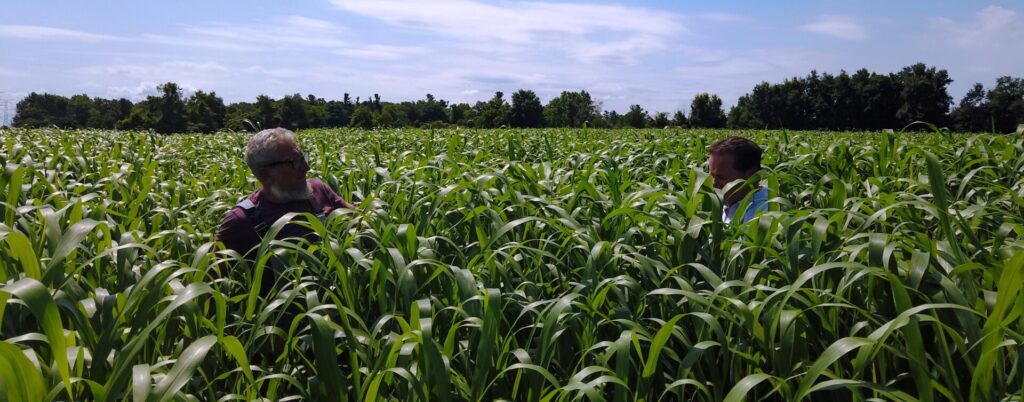

Figure 1 – HayKing II BMR sudangrass 45 days after planting. Summitholm Holsteins, Ancaster. July 31st.
Summer Seeding Alfalfa
Alfalfa mixtures seeded in August can be treated as established stands the following year with a full yield potential. The biggest risk of summer seeding forage is lack of moisture after seeding. Do not use cereal companion crops with summer seedings. Seeding after winter wheat is harvested can be a good opportunity if competition from volunteer wheat can be managed. Some light tillage to encourage the grain to germinate followed by a burndown with glyphosate or a second cultivation 10 days later will destroy much of this grain. Late seedings of alfalfa are often unsuccessful. For optimal summer seeding dates, refer to “Summer Seeding Forages”.
Double-Cropping By Summer Seeding Annual Forages
Double cropping by seeding annual forages such as cereals (oats, barley, triticale), cereal-pea mixtures, and Italian ryegrass in late-July or early-August following wheat for an early-October harvest can be a useful low-cost option for extending forage supplies. These annuals can make good quality forage when harvested at the correct stage of maturity and made into silage or baleage. (Figure 2) Nitrogen is required for higher grass species yields and quality. The challenges can sometimes be lack of adequate moisture in August, and having dry enough weather in October for adequate wilting. Refer to “Forage Options Following Wheat”.
Cereals such as oats and barley are cool-season species that are much more frost tolerant in the fall than warm-season sorghums. After frost, cereals can continue growth, maintain their quality longer and provide a wider harvest window. When seeded early (before mid-July), warm-season sorghums and millets grow quickly and well, but when seeded later after wheat, they grow slower in cool autumn weather and often encounter frost issues before harvest. Oats are the most commonly grown summer seeded cereal, and are sometimes mixed with forage peas to improve forage quality. Oat rust can be a potential issue. Refer to “Summer Seeding Oats For Forage”.
Evolution Italian ryegrass can offer a good double-crop forage option by seeding after winter wheat or cereal harvest in August for a fall harvest, subsequent over-wintering, and then cutting again in May. This can produce a very high digestible fibre and RFQ, palatable forage suitable to include in high producing dairy cow rations. A single cut can be taken in May, after which the field can be replanted to corn silage, soybeans, edible beans or sorghum-sudangrass. An alternative with a good stand is to keep taking multiple cuts for the season. It is important to control volunteer cereals before ryegrass seeding. Refer to “Evolution Italian Ryegrass Forage Options”.
Fall rye and winter triticale are sometimes grown as double crop forage options. When seeded after early-fall harvested crops in September, they are ready for harvest in southern Ontario in mid- to late-May at the flag-leaf or early-boot stage. This is often followed by corn silage or soybeans. The timing of cutting is critical, with a very narrow harvest window. A rain delay during the optimum maturity can result in quality issues. Quality, palatability, and intake drop very quickly at the heading stage, much faster than other cereals. (“Double Cropping Fall Rye For Extra Forage” http://fieldcropnews.com/?p=5241)
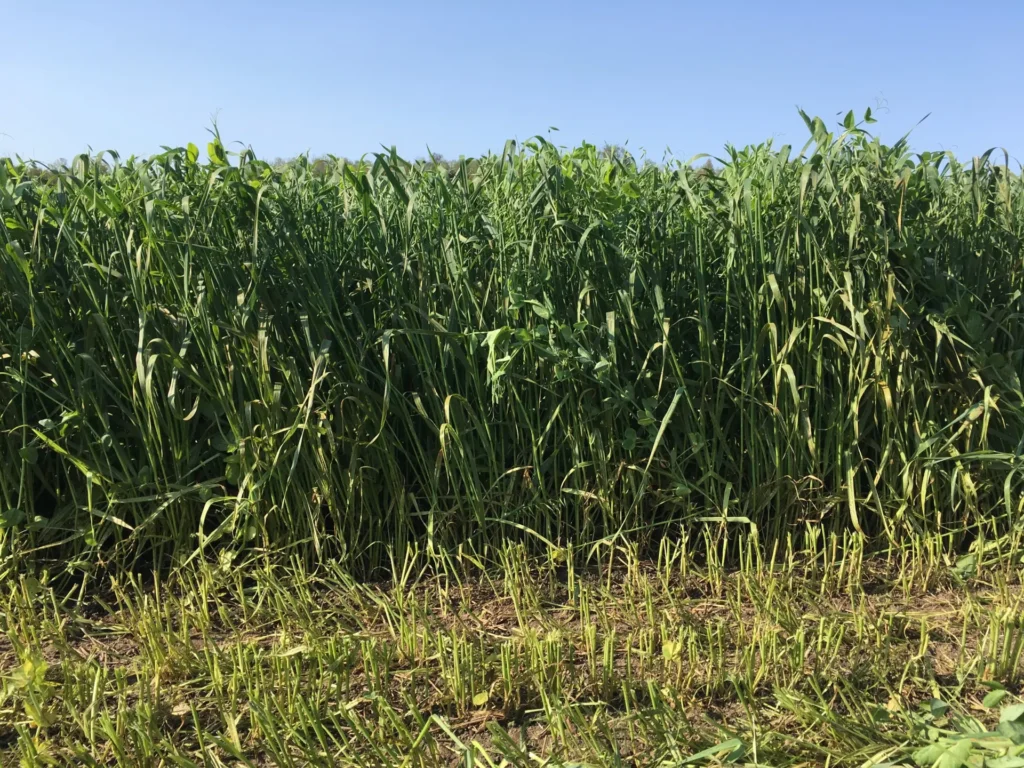

Figure 2 – Summer seeded oat-pea mixture cut 50 days after planting.
Applying Nitrogen To Grass Stands
If an alfalfa stand is uniformly thin or weakened but the grass content is good, the application of nitrogen (N) can significantly increase yields as well as the forage protein level. In grassy stands, N application easily pays for itself. Healthy stands of productive cool-season grass species (such as orchardgrass, tall fescue, meadow fescue, bromegrass, timothy, etc) can have a significant yield response to large amounts of N to optimize yield. (Figure 3) Research shows that 1 lb of N can yield an additional 25 – 40 lbs of hay. In other words, if we value hay at a modest 8¢/lb, applying 1 lb of N worth 60¢ will result in an extra 25 – 40 lbs of hay worth $2.00 to $3.20.
As a general rule, 60 lbs/ac N should be applied to stands with one-third to one-half legume. For stands with less than one-third legume, a rule of thumb is to apply 45 lbs N per tonne of expected dry matter yield. For many stands in the spring, an initial application of 90 lbs/ac N may be optimum.
Nitrogen applications on hay fields should be split for optimum response. The first application should be made just as the grass is starting to green-up, early in the spring. If rain is not limiting, a second application can be made right after the first-cut, and a third application after the second-cut.
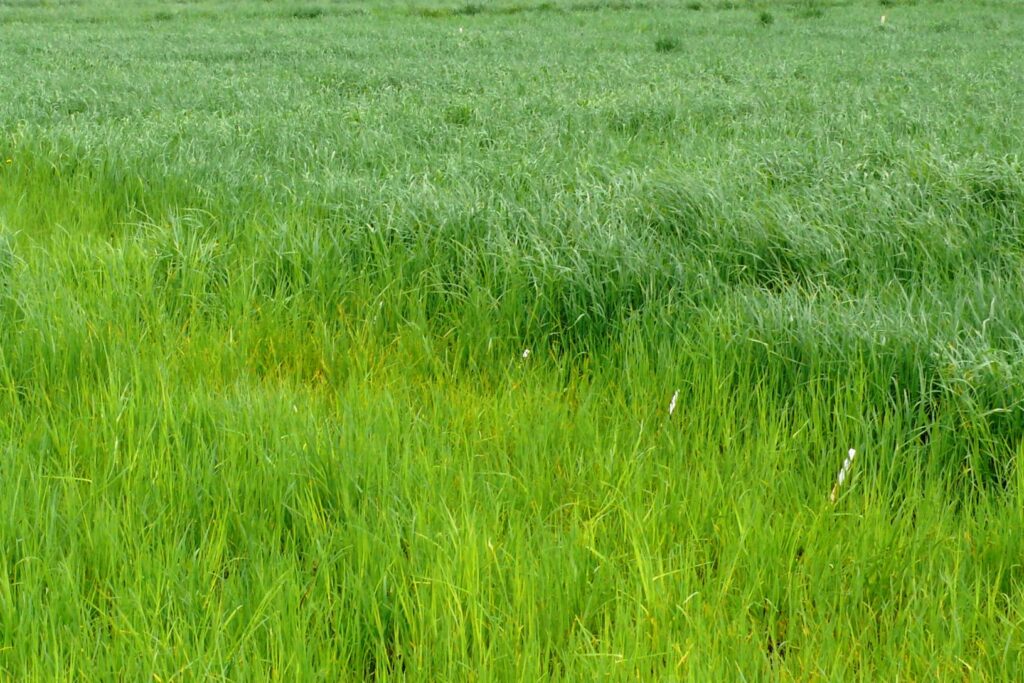

Figure 3 – Orchardgrass response to nitrogen – no N applied (bottom left) vs N applied (top right).
